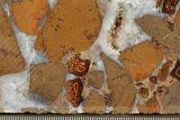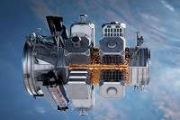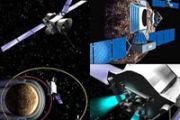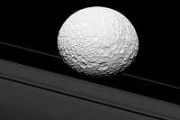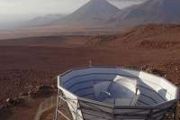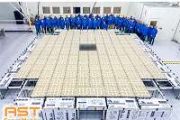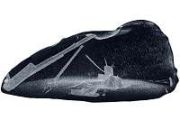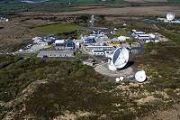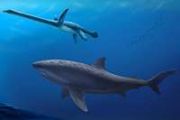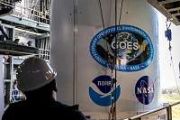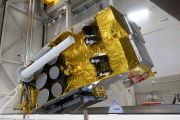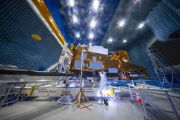
Copernical Team
Novel chirped pulses defy 'conventional wisdom'
 The 2018 Nobel Prize in Physics was shared by researchers who pioneered a technique to create ultrashort, yet extremely high-energy laser pulses at the University of Rochester.
Now researchers at the University's Institute of Optics have produced those same high-powered pulses - known as chirped pulses - in a way that works even with relatively low-quality, inexpensive equipment. The new w
The 2018 Nobel Prize in Physics was shared by researchers who pioneered a technique to create ultrashort, yet extremely high-energy laser pulses at the University of Rochester.
Now researchers at the University's Institute of Optics have produced those same high-powered pulses - known as chirped pulses - in a way that works even with relatively low-quality, inexpensive equipment. The new w NASA reports trouble with Hubble Space Telescope
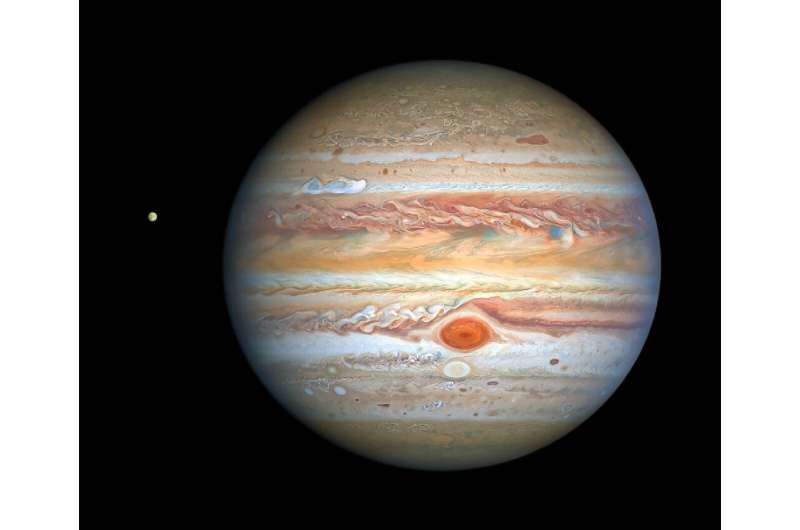
The Hubble Space Telescope, which has been peering into the universe for more than 30 years, has been down for the past few days, NASA said Friday.
The problem is a payload computer that stopped working last Sunday, the US space agency said.
It insisted the telescope itself and scientific instruments that accompany it are "in good health."
"The payload computer's purpose is to control and coordinate the science instruments and monitor them for health and safety purposes," NASA said.
Fresh group of astronauts readying for orbit
 As construction of China's space station gradually unfolds, the country needs fresh vigor to carry out the ambitious endeavor.
Currently, the Astronaut Center of China in Beijing is training the third group of Chinese astronauts.
The 18 new astronauts-17 men and one woman-are in three groups: seven will become spacecraft pilots, another seven will eventually be space flight engineers
As construction of China's space station gradually unfolds, the country needs fresh vigor to carry out the ambitious endeavor.
Currently, the Astronaut Center of China in Beijing is training the third group of Chinese astronauts.
The 18 new astronauts-17 men and one woman-are in three groups: seven will become spacecraft pilots, another seven will eventually be space flight engineers Astronauts arrange new 'home' in space
 Astronauts on board the core module of China's space station have started to prepare their orbiting residence for operations over the next three months.
As soon as the three crew members-Major General Nie Haisheng, Major General Liu Boming and Senior Colonel Tang Hongbo-floated into the core module, named Tianhe, or Harmony of Heavens, on Thursday afternoon, they started to configure the e
Astronauts on board the core module of China's space station have started to prepare their orbiting residence for operations over the next three months.
As soon as the three crew members-Major General Nie Haisheng, Major General Liu Boming and Senior Colonel Tang Hongbo-floated into the core module, named Tianhe, or Harmony of Heavens, on Thursday afternoon, they started to configure the e Astronauts may get their spleen removed before long-distance flights
 Radiation is considered one of the main issues facing space agencies in their bid to send a manned flight to Mars, according to Russian scientists from the Institute of Biomedical Problems.
Researchers from Russia and the US have been debating whether it will be necessary to remove the spleen - the organ which primarily removes old or damaged red blood cells from the body - from astronauts
Radiation is considered one of the main issues facing space agencies in their bid to send a manned flight to Mars, according to Russian scientists from the Institute of Biomedical Problems.
Researchers from Russia and the US have been debating whether it will be necessary to remove the spleen - the organ which primarily removes old or damaged red blood cells from the body - from astronauts Mystery of Betelgeuse's dip in brightness solved
 When Betelgeuse, a bright orange star in the constellation of Orion, lost more than two-thirds of its brightness in late 2019 and early 2020, astronomers were puzzled.
What could cause such an abrupt dimming?
Now, in a new paper published Wednesday in Nature, an international team of astronomers reveal two never-before-seen images of the mysterious darkening --and an explanation. The
When Betelgeuse, a bright orange star in the constellation of Orion, lost more than two-thirds of its brightness in late 2019 and early 2020, astronomers were puzzled.
What could cause such an abrupt dimming?
Now, in a new paper published Wednesday in Nature, an international team of astronomers reveal two never-before-seen images of the mysterious darkening --and an explanation. The Mystery of galaxy's missing dark matter deepens
 When astronomers using NASA's Hubble Space Telescope uncovered an oddball galaxy that looked like it didn't have much dark matter, some thought the finding was hard to believe and looked for a simpler explanation.
Dark matter, after all, is the invisible glue that makes up the bulk of the universe's matter. All galaxies appear to be dominated by it; in fact, galaxies are thought to form in
When astronomers using NASA's Hubble Space Telescope uncovered an oddball galaxy that looked like it didn't have much dark matter, some thought the finding was hard to believe and looked for a simpler explanation.
Dark matter, after all, is the invisible glue that makes up the bulk of the universe's matter. All galaxies appear to be dominated by it; in fact, galaxies are thought to form in Detector measures cosmic radiation on the Zugspitze
 Timepix3 was developed to detect elementary particles at the European Organization for Nuclear Research (CERN). It was then carried up to the International Space Station (ISS), where it measures the radiation dose to which astronauts and equipment are exposed. Most recently, Timepix3 has been used on the Zugspitze.
Its task is to simultaneously detect the secondary cosmic rays and radon de
Timepix3 was developed to detect elementary particles at the European Organization for Nuclear Research (CERN). It was then carried up to the International Space Station (ISS), where it measures the radiation dose to which astronauts and equipment are exposed. Most recently, Timepix3 has been used on the Zugspitze.
Its task is to simultaneously detect the secondary cosmic rays and radon de Space scientists solve a decades-long gamma-ray burst puzzle
 An international team of scientists, led by astrophysicists from the University of Bath in the UK, has measured the magnetic field in a far-off Gamma-Ray Burst, confirming for the first time a decades-long theoretical prediction - that the magnetic field in these blast waves becomes scrambled after the ejected material crashes into, and shocks, the surrounding medium.
Black holes are forme
An international team of scientists, led by astrophysicists from the University of Bath in the UK, has measured the magnetic field in a far-off Gamma-Ray Burst, confirming for the first time a decades-long theoretical prediction - that the magnetic field in these blast waves becomes scrambled after the ejected material crashes into, and shocks, the surrounding medium.
Black holes are forme A wrinkle to the origins of matter in the Milky Way
 New findings published this week in Physical Review Letters suggest that carbon, oxygen, and hydrogen cosmic rays travel through the galaxy toward Earth in a similar way, but, surprisingly, that iron arrives at Earth differently. Learning more about how cosmic rays move through the galaxy helps address a fundamental, lingering question in astrophysics: How is matter generated and distributed acr
New findings published this week in Physical Review Letters suggest that carbon, oxygen, and hydrogen cosmic rays travel through the galaxy toward Earth in a similar way, but, surprisingly, that iron arrives at Earth differently. Learning more about how cosmic rays move through the galaxy helps address a fundamental, lingering question in astrophysics: How is matter generated and distributed acr 





